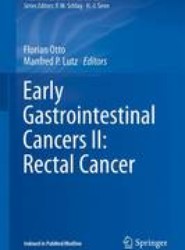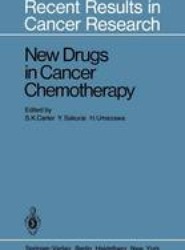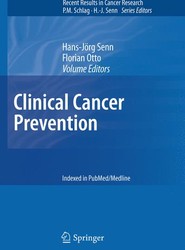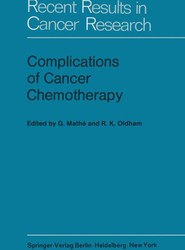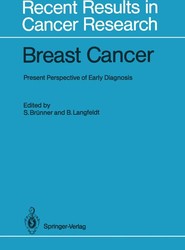(To see other currencies, click on price)
MORE ABOUT THIS BOOK
Main description:
I would like to thank all my co-workers who have collaborated with me, from 1963 until now, in biological and clinical research in the field of cancer active immunotherapy, of its immuno prevention and immunorestoration. They will often be quoted in this book. I am particularly grateful to those who have helped me to write it by reviewing some chapters: D. BELPOMME, J. F. DOR~, IRENE FLORENTIN, A. GOUTNER, I. J. Hm, R. HUCHET and MARIE-CHRISTINE SIMMLER. I also thank NICOLE VRIZ, MARIE-CLAUDE SCHNEIDER, FENELLARIsELEY and M. JUVET for their willing and efficient co-operation in the preperation of the manuscript. I am finally grateful to all authors of books or articles who authorized me to reproduce their figures or tables. Paris, April 1976 G. MAT~ Contents Chapter 1. Introduction and Definitions 1 Chapter 2. Biological Basis: Tumour Associated Antigens, the Immune Machinery and Its Behaviour Concerning Cancer Cells 5 2. 1. Tumour-Associated Antigens 5 2. 2. The Immune Machinery 19 2. 2. 1. Humoral Mediated Immunity and Cell Mediated Immunity 19 2. 2. 2. T- and B-Lymphocyte and Monocyte Differen tiation 22 2. 2. 3. T-Lymphocyte Functions 25 2. 2. 4. B-Lymphocyte Functions 30 2. 2. 5. Macrophage Functions 31 2. 2. 6. K-Cell Function 32 2. 3. The Immune Machinery and Cancer Cells 33 2. 3. 1. Mechanisms Involved in Tumour Cell Rejec tion 33 2. 3. 1. 1. In vivo Evidence for Tumour Immunity 33 2. 3. 1. 2.
Contents:
1. Introduction and Definitions.- 2. Biological Basis: Tumour Associated Antigens, the Immune Machinery and Its Behaviour Concerning Cancer Cells.- 2.1. Tumour-Associated Antigens.- 2.2. The Immune Machinery.- 2.2.1. Humoral Mediated Immunity and Cell Mediated Immunity.- 2.2.2. T- and B-Lymphocyte and Monocyte Differentiation.- 2.2.3. T-Lymphocyte Functions.- 2.2.4. B-Lymphocyte Functions.- 2.2.5. Macrophage Functions.- 2.2.6. K-Cell Function.- 2.3. The Immune Machinery and Cancer Cells.- 2.3.1. Mechanisms Involved in Tumour Cell Rejection.- 2.3.1.1. In vivo Evidence for Tumour Immunity.- 2.3.1.2. In vitro Assays for Cell Mediated Immunity.- 2.3.1.3. Role of T-Lymphocytes in Tumour Rejection.- 2.3.1.4. Role of Antibody in Tumour Cell Rejection.- 2.3.1.5. Role of K-Cells.- 2.3.1.6. Role of Macrophages.- 2.3.2. Escape Mechanisms to Tumour Destruction.- 2.3.2.1. Escape Mechanisms Prior to Tumour Establishment.- 2.3.2.2. Escape Mechanisms after Tumour Establishment.- 2.3.2.2.1. Role of Serum Blocking Factors.- 2.3.2.2.2. Role of Suppressor Cells.- 2.3.2.2.3. Role of the Tumour Itself.- 2.3.3. The Immune Balance.- 3. Systemic Active Immunotherapy.- 3.1. Experimental.- 3.1.1. Leukaemias.- 3.1.1.1. Active Immunotherapy on Limited Tumour Cell Populations.- 3.1.1.2. Type of Action: The Plateau of Tumour Growth Phenomenon.- 3.1.1.3. Comparison of the Use of Sterilized Tumour Cells, a Systemic Immunity Adjuvant (BCG), or a Combination of Both.- 3.1.1.4. Active Immunotherapy after Cell Reduction by Chemotherapy.- 3.1.1.5. Immunotherapy and Immunological Parameters.- 3.1.1.6. Active Immunotherapy of Perceptible Voluminous Leukaemia.- 3.1.2. Solid Tumors.- 3.1.2.1. Active Immunotherapy on Limited Tumour Cell Population.- 3.1.2.2. Active Immunotherapy after Cell Reduction by Surgery and/or Radiotherapy and/or Chemo- or Hormonotherapy.- 3.1.2.3. Active Systemic Immunotherapy of Perceptible Voluminous Solid Tumours.- 3.1.2.4. Immunotherapy of Metastasis.- 3.1.3. Problems Common to Leukaemias and Solid Tumours.- 3.1.3.1. The Myth of Immunological Tolerance in the Case of Tumours Associated with Vertically Transmitted Spontaneous Virus.- 3.1.3.2. Immunotherapy and Chemotherapy Interspersed.- 3.1.3.3. Negative Results.- 3.1.3.4. The Possibility of Neoplasia Growth Enhancement.- 3.2. Clinical.- 3.2.1. Leukaemias and Hematosarcomas.- 3.2.1.1. Residual Imperceptible Disease.- 3.2.1.1.1. Acute Lymphoid Leukaemia.- 3.2.1.1.2. Acute Myeloid Leukaemia.- 3.2.1.1.3. Blastic Crisis of Chronic Myeloid Leukaemia.- 3.2.1.1.4. Lymphosarcomas.- 3.2.1.1.5. Hodgkin's Disease.- 3.2.1.2. Treatment of Perceptible Disease.- 3.2.1.2.1. Acute Lymphoid Leukaemia.- 3.2.2. Solid Tumours.- 3.2.2.1. Treatment of Residual Imperceptible Disease.- 3.2.2.1.1. Special Case of Placental Choriocarcinoma.- 3.2.2.1.2. Melanoma.- 3.2.2.1.3. Bronchus Cancer.- 3.2.2.1.4. Mammary Carcinoma.- 3.2.2.1.5. Osteosarcoma.- 3.2.2.2. Treatment of Perceptible Disease.- 3.2.2.2.1. Melanoma.- 3.2.2.2.2. Bronchus Cancer.- 3.2.2.2.3. Head and Neck Tumours.- 3.2.2.2.4. Gynaecological Cancers.- 3.2.2.2.5. Brain Tumours.- 3.2.2.2.6. Various Tumours.- 3.2.3. Problems Common to Leukaemia and Solid Tumours.- 3.2.3.1. Immunotherapy and Chemotherapy Interspersed.- 3.2.3.2. Negative Results.- 3.2.3.3. Possibility of Neoplasia Growth Enhancement.- 4. Cancer Local Active Immunotherapy.- 4.1. Experimental.- 4.1.1. BCG and Other Mycobacteria.- 4.1.2. Corynebacteria and Other Bacterias.- 4.1.3. Other Agents.- 4.1.4. Failures and Factors and Conditions of Efficacy.- 4.1.5. Possibility of Neoplasia Growth Enhancement.- 4.2. Clinical.- 4.2.1. BCG.- 4.2.2. Other Agents.- 4.2.3. Failures, Factors and Conditions of Efficacy.- 4.2.4. Possibility of Neoplasia Growth Enhancement.- 5. Towards Immunoprophylaxis.- 5.1. Experimental.- 5.1.1. Grafted Tumours.- 5.1.1.1. Use of Neoplastic Cells.- 5.1.1.2. Use of Systemic Immunity Adjuvants.- 5.1.1.3. Combination of an Adjuvant and of Tumour Cells.- 5.1.2. Carcinogen Induced and Spontaneous Tumours.- 5.1.2.1. Virus Induced Tumours.- 5.1.2.1.1. Use of Tumour Cells or Viruses.- 5.1.2.1.2. Use of Systemic Immunity Adjuvants.- 5.1.2.1.3. Use of a Combination of an Adjuvant and of Tumour Cells or Viruses.- 5.1.2.2. Chemically Induced Tumours.- 5.1.2.2.1. Use of Cells.- 5.1.2.2.2. Use of Systemic Immunity Adjuvants.- 5.1.2.3. Does Immunoprophylaxis Work before Carcinogenes is Established?.- 5.1.2.4. Failures.- 5.1.2.5. Possibility of Neoplasia Growth Enhancement.- 5.1.2.5.1. Grafted Tumours.- 5.1.2.5.2. Induced Tumours.- 5.2. Clinical.- 5.2.1. Prophylaxis of Blastic Crisis of Chronic Myeloid Leukaemia.- 5.2.2. Prophylaxis of Childhood Leukaemia by BCG Vaccination.- 6. Towards Immune Restoration.- 6.1. Immunodeficiency Associated with Cancer, and Cancer Risk in Immunodeficiency Subjects.- 6.1.1. Experimental.- 6.1.1.1. Animals with Cancer.- 6.1.1.2. Cancer Risk in Immunodeficient Animals.- 6.1.2. Clinical.- 6.1.2.1. Cancer Patients.- 6.1.2.1.1. Immunodeficiency Due to Treatments.- 6.1.2.1.2. Immunodeficiency Due to/or Associated with Cancer.- 6.1.2.2. Immunodeficiency Diseases or Syndromes with High Cancer Risk.- 6.2. Attempts at Immunorestoration.- 6.2.1. Experimental.- 6.2.1.1. Use of Thymic Lymphocyte-Stimulating Factor (or Thymosin).- 6.2.1.2. Use of Adjuvants.- 6.2.2.1. Transfer Factor.- 6.2.2.2. Thymus Lymphocyte Stimulating Factor (or Thymosin).- 6.2.2.3. Adjuvants.- 6.2.2.4. Immune "Restoration" by Proteolysis.- 6.2.2.5. Immunorestoration by Surgery.- 6.2.2.6. Immunorestoration by Cancer Chemotherapy.- 6.2.2.7. Combined Methods.- 7. Developmental Pharmacology.- 7.1. Systemic Specific Active Immunotherapy or Immunoprophylaxis.- 7.1.1. Tumour Cells and/or Antigens.- 7.1.1.1. Should Antigenicity be Restricted to Tumour-Associated Antigens or Not?.- 7.1.1.2. Allogeneic Versus Autologous Materials. Tumour Type Cells for Treated Tumour Types.- 7.1.1.3. Antigenicity and/or Immunogenicity.- 7.1.1.5. Division-Sterilized Cells.- 7.1.1.6. Cryopreserved Cells.- 7.1.1.7. Pooled Cells.- 7.1.1.8. Subpopulations of Cells.- 7.1.1.9. Living Versus Killed Cells.- 7.1.2.0. Modified Cells.- 7.1.2.1. Cultured Cells.- 7.1.2.2. Modified Normal Cells.- 7.1.2.3. Hybridized Cells.- 7.1.2.4. Tumour-Associated Antigen Preparations.- 7.1.2. Dose Factor.- 7.1.3. Sites of Administration.- 7.1.4. Should Cells or Antigens be Mixed with the Adjuvant?.- 7.2. Systemic Non-Specific Active Immunointervention.- 7.2.1. Systemic Immunity Adjuvants.- 7.2.1.1. The Innumerable Adjuvants in the Literature.- 7.2.1.2. Experimental Screening and Pharmacology.- 7.2.1.2.1. The ICIG-EORTC Experimental Screening for Systemic Immunity Adjuvants.- 7.2.1.2.2. BCG Preparations and Presentation.- 7.2.1.2.3. Extracts of BCG and Other Mycobacterias.- 7.2.1.2.4. Corynebacteria Preparations.- 7.2.1.2.5. Polynucleotides.- 7.2.1.2.6. Other Agents.- 7.2.1.2.7. Experimental Pharmacology.- 7.2.1.3. Clinical Screening and Pharmacology.- 7.2.1.3.1. The ICIG-EORTC Clinical Screening for Systemic Immunity Adjuvants or Immunorestorators.- 7.2.1.3.2. Clinical Pharmacology.- 7.2.1.3.2.1. BCG Preparations.- 7.2.1.3.2.2. Mycobacteria Extracts.- 7.2.1.3.2.3. Corynebacteria.- 7.2.1.3.2.4. Polynucleotides.- 7.2.1.3.2.5. Other Agents.- 7.2.1.3.2.6. Combinations of Several Adjuvants.- 7.2.2. Hormones.- 7.2.2.1. Experimental.- 7.2.2.1.1. Oestrogens.- 7.2.2.1.2. Thymosin.- 7.2.2.2. Clinical.- 7.2.2.2.1. Oestrogens.- 7.2.2.2.2. Thymosin.- 7.3. Local Immunotherapy.- 7.3.1. Experimental Pharmacology.- 7.3.1.1. BCG.- 7.3.1.2. Extracts from Mycobacteria.- 7.3.1.3. Corynbacteria.- 7.3.1.4. Bordetella Pertussis.- 7.3.1.5. Other Materials.- 7.3.1.6. Mixtures.- 7.3.2. Clinical Pharmacology.- 7.3.2.1. BCG.- 7.3.2.2. Other Materials.- 8. Toxicology and Adverse Effects.- 8.1. Systemic Active Immunotherapy.- 8.1.1. Experimental.- 8.1.1.1. Specific.- 8.1.1.2. Systemic Immunity Adjuvants.- 8.1.1.2.1. BCG.- 8.1.1.2.2. Mycobacteria Preparations.- 8.1.1.2.3. Corynebacteria and Other Micro-Organisms.- 8.1.1.2.4. Polynucleotides, Lentinan, Tetramisole, Vitamins.- 8.1.1.3. Miscellaneous.- 8.1.2. Clinical.- 8.1.2.1. Specific.- 8.1.2.2. Systemic Immunity Adjuvants.- 8.1.2.2.1. BCG.- 8.1.2.2.2. Mycobacterial Extracts.- 8.1.2.2.3. Corynebacteria.- 8.1.2.2.4. Bordetella Pertussis and Brucella Abortus.- 8.1.2.2.5. Polynucleotides.- 8.1.2.2.6. Other Agents.- 8.1.2.2.7. Combinations of Several Adjuvants.- 8.1.2.3. Hormones.- 8.1.2.4. Other Means.- 8.2. Local Active Immunotherapy.- 8.2.1. Experimental.- 8.2.2. Clinical.- 9. Mechanisms of Favourable and Adverse Effects and of Failures.- 9.1. Systemic Immuno-Intervention.- 9.1.1. Specific Stimulus.- 9.1.2. Non-Specific.- 9.1.2.1. Adjuvants.- 9.1.2.1.1. Historical Adjuvants.- 9.1.2.1.2. Systemic Action of Adjuvants.- 9.1.2.1.3. Classification of Adjuvants According to Their Main Target Cells.- 9.1.2.1.4. Particular Study of Adjuvants Already Used in Man.- 9.1.2.1.4.1. BCG.- 9.1.2.1.4.2. Corynebacteria.- 9.1.2.1.4.3. Polynucleotides and Other Adjuvants.- 9.1.2.2. Hormones.- 9.1.3. Failures and Adverse Effects.- 9.1.3.1. Immune Inefficiency of Cancer Subjects.- 9.1.3.2. Possible Immunodepressive Effect of Adjuvants.- 9.1.3.3. Antigenic Competition.- 9.1.3.4. Immunological Enhancement.- 9.1.3.5. Tumour Volume and Blocking Humoral Factors.- 9.1.3.6. Anatomic Sites of Tumours.- 9.1.3.7. Lack of Antigenicity and/or Immunogenicity of the Tumours.- 9.1.3.8. Secondary Resistance to Immunotherapy.- 9.2. Local Immunotherapy.- 10. Conclusion: Immunotherapy and Immunorestoration Today in the Strategy of Cancer Treatment; Their Perspectives and that of Immunoprophylaxis.- 10.1. Evaluation of the Immune Status of the Patient.- 10.2. Attempts at Immunorestoration in Case of Immunodepression.- 10.2.1. General Immunity.- 10.2.2. General Immunity and Sensitivity to Adjuvant(s) or Antigen(s) to be Used for Local Immunotherapy.- 10.3. The Patient is an Immunoresponder (Without or After Immunorestoration).- 10.3.1. Residual Imperceptible Disease.- 10.3.2. Perceptible Tumours Not Curable by Surgery Radiotherapy or Chemotherapy.- 10.3.2.1. Indications for Local Immunotherapy.- 10.3.2.2. Indications for Systemic Immunotherapy.- 10.3.2.3. Combinations of Several Types of Immunotherapy.- 10.3.3. Surgery, Radiotherapy, Chemotherapy or Combination Curable Tumours.- 10.4. Immunoprophylaxis of Cancer.- 11. Appendix: Towards Monitoring the Immunological Status and Its Modification Induced by Immunotherapy, Immunorestoration or Immunoprophylaxis.- 11.1. Exploration of General Responses.- 11.2. Attempts at Evaluating Responses to Tumour-Associated Antigens.
PRODUCT DETAILS
Publisher: Springer (Springer-Verlag Berlin and Heidelberg GmbH & Co. K)
Publication date: February, 2012
Pages: None
Weight: 686g
Availability: Not available (reason unspecified)
Subcategories: General Practice, Oncology
From the same series
Friedhelm Raue
Thomas Ried
Christian Wittekind
Florian Otto
Markus W. Buchler
C. Stroszczynski
Manfred Dietel
H.-J. Senn
Otmar Schober
Jean-Nicolas Vauthey
Elmar Detering
Richard P. Baum
G. Mathe
R. Gross
Florian Otto
Uwe M. Martens
Michail Ignatiadis
Georges Mathe
M. S. Griem
Jack Cuzick
Michael Gnant
Ute Goerling
Hans-Jorg Senn
Werner H. Kirsten
F.A. Langley
Kuan-Teh Jeang
Janusz Jankowski
J. Bernard
Thomas Moehler
Andrea Tannapfel
S.K. Carter
R. S. Nelson
Kerry S. Courneya
Rolf D. Issels
Hans-Jorg Senn
Florian Otto
W. Fischbach
Umberto Veronesi
Otmar Schober
Paul M. Schneider
Hans-Jorg Senn
Wolfgang Tilgen
Jean-Nicolas Vauthey
Richard P. Baum
J. L. Hayward
W. H. Kirsten
Henry T. Lynch
Georges Mathe
G. T. Pack
Leon Goldman
Charles G. Moertel
R.G. Freeman
L. Manuila
Agnes Glaus
Rudiger Liersch
Richard Schindler
Uwe M. Martens
W.A. Fuchs
Michail Ignatiadis
Edward S. Meek
P. Roy-Burman
Merle Mizell
Jean Lindenmann
Pavel Koldovsky
Enrico Anglesio
Georges Mathe
Hans-Jorg Senn
James H. Goldie
Donald Metcalf
Siegfried Seeber
Israel Penn
B. Sokoloff
Manfred Schwab
E. Grundmann
H.-D. Pape
Robert S. Nelson
J. Lange
G. Bonadonna
J. Szymendera
H. B. Marsden
K. E. Stanley
E. Grundmann
C. Bohuon
Pierre Denoix
A. C. Templeton
Ekkehard Grundmann
Michael Wannenmacher
Ivan Damjanov
Wolf-Dieter Ludwig
Friedhelm Raue
M. L. Jacobs
H.K. Muller-Hermelink
Rita Engenhart-Cabillic
E. Grundmann
Peter M Schlag
E. Grundmann
Ekkehard Grundmann
G. Mathe
Donald Metcalf
S. Brunner
F. F. Holmes
G. Mathe
G. Mathe
Pierre Band
Stephen C. Schimpff
K. Schwemmle
Michael Gnant
K. Hoffken
Friedhelm Raue
H. R. Scheurlen
Aron Goldhirsch
H. Acker
Hans-Jorg Senn
F. G. J. Hayhoe
William Duncan
E. Thiel
Hans-Jorg Senn
K. Musshoff
Hans-Jorg Senn
A. Rossi-Fanelli
Peo C. Koller
Volker Diehl
K. Hoffken
H.-J. Senn
Bruce S. Schoenberg
G. St. Arneault
S.K. Carter
B. Henningsen
J. Hekmatpanah
G. Mathe
E. Grundmann
Hans-Jorg Senn
G. Mathe
Sam Brunner
Hans-Jorg Senn
V. Hofmann
Michael Wannenmacher
G. Wagner
Hans-Jorg Senn
Rudolf Pichlmayr
Frank M. Torti
Michael Wannenmacher
William Duncan
G. Mathe
M. Bamberg
H.-P. Lohrmann
E. Grundmann
Niels Neymark
Peter M Schlag
P. Koldovsky
G. Nass
W. Duncan
Ekkehard Grundmann
Richard P. Gallagher
Hans-Jorg Senn
W. Duncan
W. Duncan
S.K. Carter
Michael Molls
Sam Brunner
Peter Boyle
Maurizio Ponz de Leon
U. Reinhold
Gunter Burg
K. Hoffken
H.-J. Senn
F.W. Schildberg
Beat Thurlimann
Janusz Jankowski
Thomas Moehler
Andrea Tannapfel
Kerry S. Courneya
H.-J. Senn
Per-Ulf Tunn
Andreas von Deimling
Antonella Surbone
Ursula Kapp
Hans-Jorg Senn
Santiago Gonzalez-Moreno
Hanno Riess
Paul M. Schneider
Uwe M. Martens
Rudiger Liersch
Renzo Brun del Re
Andreas von Deimling
Ursula Kapp
Per-Ulf Tunn
Hanno Riess
Antonella Surbone
Manfred Dietel
Santiago Gonzalez-Moreno
Louis Denis
H.-J. Senn
C. Stroszczynski

















